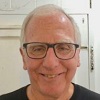7.3: Global North and South
- Page ID
- 51776
Global North and South Today – 3x, 4%, 6x.
Today, compared to the North, the South has three times the land area, only 4% of the average income and six times the population, (“3x, 4%, 6x”), much lower life expectancy (especially for women), less clean water, less good housing, fewer roads and lower literacy rates (again, especially for women). Depending on how you define it, about one quarter of the world lives in extreme poverty, with no clean water and not enough food. Poverty is made worse by population increases, and virtually all of the world’s future population growth will occur in the Global South. There are also severe health problems with TB, malaria, AIDS, hepatitis, dengue fever and increased smoking.
Some Newly Industrializing Countries (NICs) have closed the gap. First was Japan, then Taiwan, Singapore, Hong Kong and South Korea. Now Brazil, India and China and are rising (the so-called BRIC countries), although many of their people are still poor. Indonesia, Vietnam, Malaysia, Turkey and Mexico are also rising.
Some Eastern European countries such as Estonia with good technical education systems are using their computer skills to move up. India’s tech sector and middle class are growing thanks to the effect of universities such as the India Institutes of Technology. A few countries are temporarily living large on oil money. However, there is a group of countries falling farther and farther behind – in Africa and the Middle East, Southwest Asia, the Andean countries and Central America. Some are ‘failed states,’ where the governments do not operate effectively.
There has been serious worldwide progress in decreasing extreme poverty and meeting basic human needs, but there is a long way to go. The Human Development Index measures access to food, water, clothing, shelter, life expectancy, education, health care, employment and human rights. Many countries in the Global South are low on the Human Development Index, with large numbers of people in deep poverty – lacking food, clothing and shelter.
The photo book Material World shows the world’s huge disparities in wealth by displaying the few family goods of African villagers and large yards filled with the possessions of Americans.


